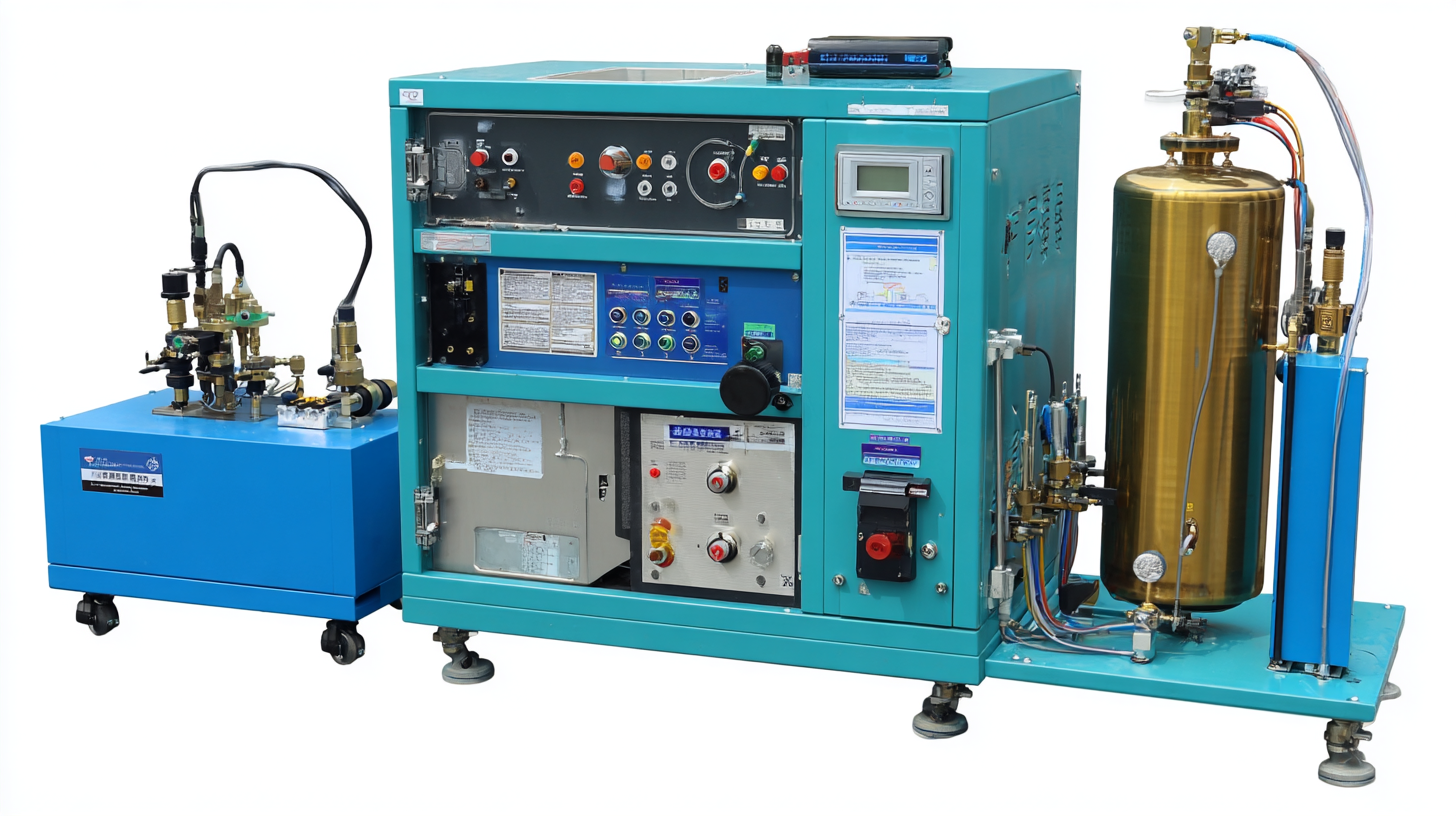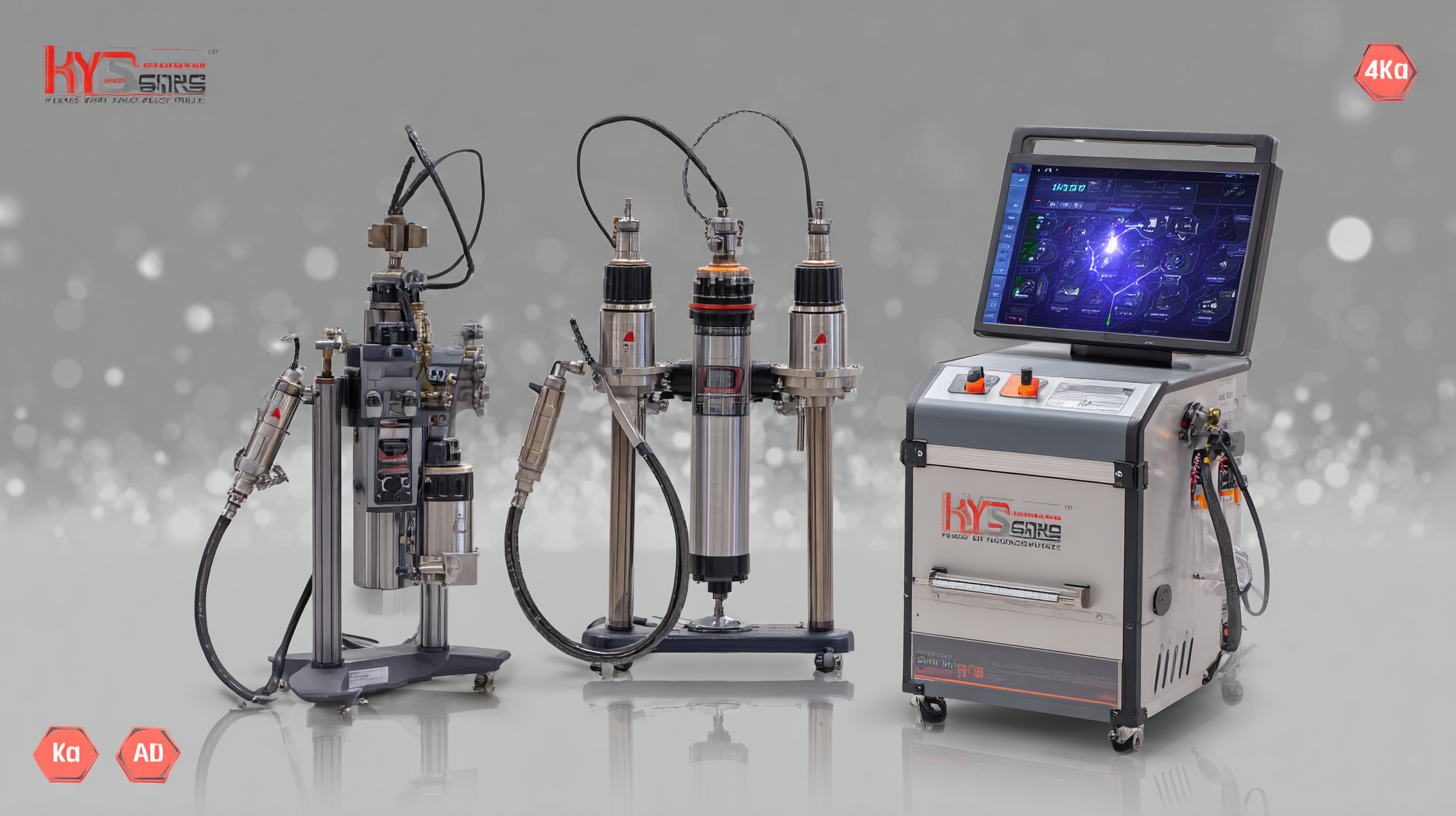As industries increasingly seek advanced manufacturing technologies, the role of Plasma Spraying Equipment is becoming paramount in various applications, from aerospace to biomedical sectors. This blog delves into the dynamic landscape of the Plasma Spraying Equipment market, projecting significant growth by 2025. With innovations constantly reshaping this sector, understanding key trends, insights, and strategies is essential for stakeholders aiming to stay competitive. By examining the digital transformation within the market and highlighting the best types of plasma spraying equipment, this exploration will provide valuable information for manufacturers, researchers, and investors alike. Join us as we uncover how these advancements are set to revolutionize various industries and what it means for the future of manufacturing.

The plasma spraying equipment market is poised for significant growth by 2025, driven by key trends that are reshaping the industry landscape. As industries increasingly adopt advanced coating technologies, the demand for plasma spraying equipment continues to rise. The global plasma surface treatment equipment market is projected to expand from $394 million in 2025 to $576.8 million by 2032, suggesting a robust annual growth rate of 5.6%. This growth is fueled by the increasing use of plasma surface treatment in various applications, including automotive and aerospace, where enhanced durability and resistance to wear are essential.
Moreover, the emergence of new technologies within the plasma spraying domain is expected to play a crucial role in market dynamics. Innovations in non-thermal plasma technologies and their implementation across multiple sectors are gaining traction. The rising focus on eco-friendly solutions and enhanced performance attributes is likely to drive the development of advanced plasma spraying equipment. As the market matures, stakeholders need to adapt their strategies to leverage these trends and capitalize on the expanding opportunities within the plasma spraying equipment market leading up to 2025.
As the plasma spraying equipment market evolves, technological advancements are set to reshape the landscape significantly by 2025. The increasing demand for more efficient, durable, and eco-friendly coatings in industries such as aerospace, automotive, and healthcare is driving innovation. According to a recent market analysis, the plasma spraying equipment market is anticipated to grow by over 7% annually, reaching a valuation of approximately $2 billion by 2025. This growth is largely fueled by the integration of advanced materials and automation in spraying processes.
Innovative techniques like High Velocity Oxygen Fuel (HVOF) and the development of new plasma spray materials are becoming more prominent. These advancements not only enhance the coating properties but also reduce waste and energy consumption. Companies investing in R&D for these technologies stand to gain a competitive edge. For instance, incorporating real-time monitoring systems in plasma spraying can lead to improved performance and reduced defects, driving up productivity.
Tip: To stay ahead in this competitive market, organizations should prioritize partnerships with technology providers and focus on continuous training for their workforce. Engaging with research institutions can also foster groundbreaking developments that align with emerging industry trends.
The plasma spraying equipment market is poised for significant growth by 2025, driven by advancements in technology and a diversified range of applications. Among the main types, low-pressure/vacuum plasma and atmospheric plasma stand out due to their distinctive operational advantages and suitability for various substrates. Low-pressure plasma treatments, known for their ability to uniformly coat complex geometries, are being increasingly utilized in the aerospace and automotive industries, where precision is paramount. In contrast, atmospheric plasma spraying is gaining traction in the manufacturing sector for its efficiency at ambient conditions, making it ideal for cost-effective large-scale applications.

Recent studies have highlighted the effectiveness of these different plasma spraying types in enhancing material properties. For instance, atmospheric plasma sprayed WC-Co coatings are recognized for their exceptional fracture toughness and microhardness, making them ideal for wear-resistant applications. Comparative analyses have shown that each process—cold spray, atmospheric plasma spray, and high-velocity oxy fuel (HVOF)—has unique benefits and environmental considerations. According to a comprehensive review, the atmospheric plasma spray process demonstrates lower emissions and energy consumption, emphasizing its role in promoting sustainable manufacturing practices while delivering high-performance coatings.
The plasma spraying equipment market is poised for significant growth, underpinned by the increasing demand across various industries, including aerospace, automotive, and electronics. As highlighted in recent reports, the market is expected to expand substantially by 2025, driven by key players leveraging advanced technologies and innovative strategies to capture market share. A notable report indicates that the surface treatment equipment market is projected to reach USD 26.47 billion by 2034, reflecting a compound annual growth rate (CAGR) of 5.32%. This growth underscores the vital role of plasma spraying in enhancing surface properties, which is critical in various manufacturing processes.
Major players in the plasma spraying sector are focusing on expanding their product lines and enhancing performance to meet the evolving needs of their customers. For instance, the plasma surface treatment equipment market analysis reveals a burgeoning interest in both low pressure/vacuum plasma and atmospheric plasma technologies. This diversification in types allows companies to better serve specific applications, such as thermal barrier coatings and wear-resistant coatings. With the global thin film coating market also estimated to grow from USD 37.11 billion in 2024, it is evident that investment in cutting-edge plasma spraying technology is pivotal for maintaining competitive advantage in these adjacent sectors.
The plasma spraying equipment market is poised for significant growth, with projections indicating a rise from $394.0 million in 2025 to $576.8 million by 2032, reflecting a compound annual growth rate (CAGR) of 5.6%. This growth trajectory underscores the increasing demand for advanced surface treatment technologies across various sectors, including aerospace, automotive, and electronics. Key strategies for market participants will involve investing in innovative technologies and expanding their service offerings to cater to the evolving needs of diverse industries.

Additionally, the trend toward greater automation and precision in manufacturing processes is likely to drive the adoption of plasma spraying equipment. As industries seek to enhance product durability and performance, integrating plasma spraying technologies could provide a competitive edge. Market players are encouraged to focus on developing user-friendly systems and efficient processes that minimize waste and maximize output, thereby aligning with the overall goal of sustainability in manufacturing. With the forecasted revenue growth, this sector presents lucrative opportunities for stakeholders willing to adapt and innovate in response to market demands.
TradeManager
Teams
VKontakte


